Premium Only Content
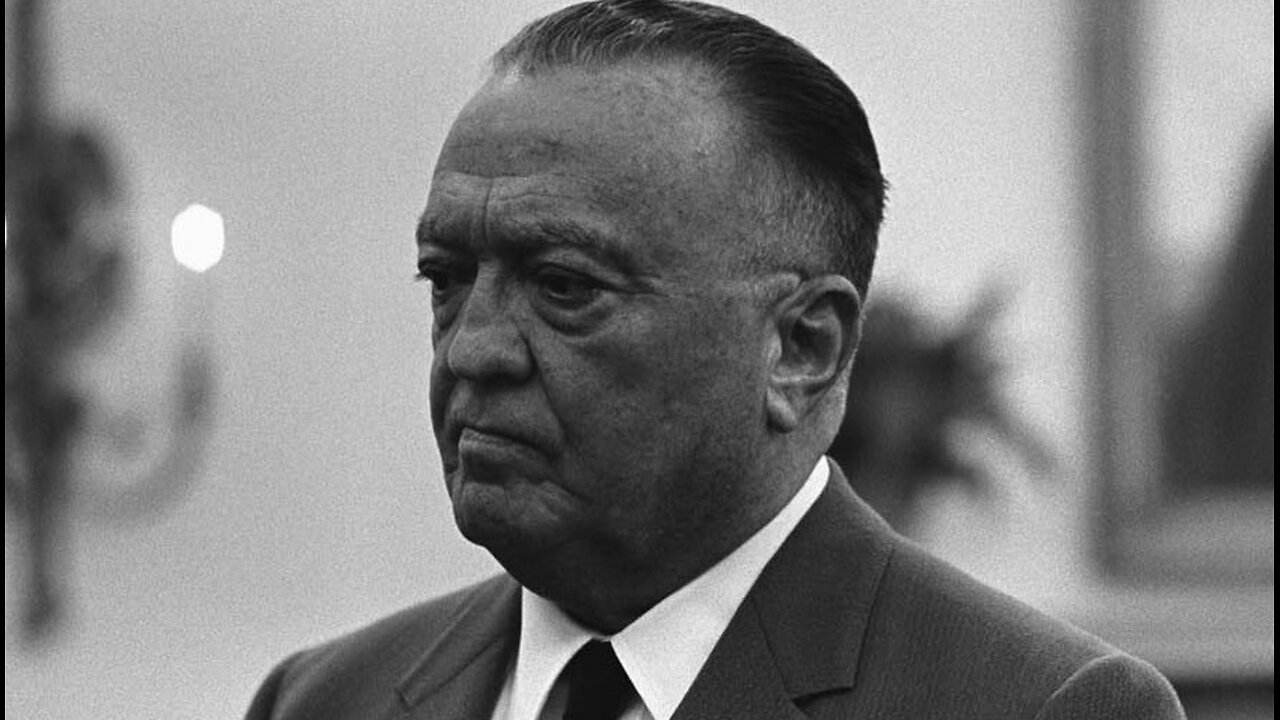
COINTELPRO: How the FBI Tracked and Infiltrated Domestic Political Organizations (2017)
According to attorney Brian Glick in his book War at Home, the FBI used five main methods during COINTELPRO:
Infiltration: Agents and informers did not merely spy on political activists. Their main purpose was to discredit, disrupt and negatively redirect action. Their very presence served to undermine trust and scare off potential supporters. The FBI and police exploited this fear to smear genuine activists as agents.
Psychological warfare: The FBI and police used a myriad of "dirty tricks" to undermine movements. They planted false media stories and published bogus leaflets and other publications in the name of targeted groups. They forged correspondence, sent anonymous letters, and made anonymous telephone calls. They spread misinformation about meetings and events, set up pseudo movement groups run by government agents, and manipulated or strong-armed parents, employers, landlords, school officials, and others to cause trouble for activists. They used bad-jacketing to create suspicion about targeted activists, sometimes with lethal consequences.[73]
Harassment via the legal system: The FBI and police abused the legal system to harass dissidents and make them appear to be criminals. Officers of the law gave perjured testimony and presented fabricated evidence as a pretext for false arrests and wrongful imprisonment. They discriminatorily enforced tax laws and other government regulations and used conspicuous surveillance, "investigative" interviews, and grand jury subpoenas in an effort to intimidate activists and silence their supporters.[72][74]
Illegal force: The FBI conspired with local police departments to threaten dissidents; to conduct illegal break-ins in order to search dissident homes; and to commit vandalism, assaults, beatings and assassinations.[72] The objective was to frighten or eliminate dissidents and disrupt their movements.
Undermine public opinion: One of the primary ways the FBI targeted organizations was by challenging their reputations in the community and denying them a platform to gain legitimacy. Hoover specifically designed programs to block leaders from "spreading their philosophy publicly or through the communications media". Furthermore, the organization created and controlled negative media meant to undermine black power organizations. For instance, they oversaw the creation of "documentaries" skillfully edited to paint the Black Panther Party as aggressive, and false newspapers that spread misinformation about party members. The ability of the FBI to create distrust within and between revolutionary organizations tainted their public image and weakened chances at unity and public support.[48]
The FBI specifically developed tactics intended to heighten tension and hostility between various factions in the black power movement, for example between the Black Panthers and the US Organization. For instance, the FBI sent a fake letter to the US Organization exposing a supposed Black Panther plot to murder the head of the US Organization, Ron Karenga. They then intensified this by spreading falsely attributed cartoons in the black communities pitting the Black Panther Party against the US Organization.[48] This resulted in numerous deaths, among which were San Diego Black Panther Party members John Huggins, Bunchy Carter and Sylvester Bell.[72] Another example of the FBI's anonymous letter writing campaign is how they turned the Blackstone Rangers head, Jeff Fort, against former ally Fred Hampton, by stating that Hampton had a hit on Fort.[48] They also were instrumental in developing the rift between Black Panther Party leaders Eldridge Cleaver and Huey Newton, as executed through false letters inciting the two leaders of the Black Panther Party.[48]
Dhoruba Bin Wahad, a former Black Panther, reflects on how these tactics made him feel, saying he had a combat mentality and felt like he was at war with the government. When asked about why he thinks the Black Panthers were targeted he said, "In the United States, the equivalent of the military was the local police. During the early sixties, at the height of the civil rights movement, and the human rights movement, the police in the United States became increasingly militaristic. They began to train out of military bases in the United States. The Law Enforcement Assistance Act supplied local police with military technology, everything from assault rifles to army personnel carriers. In his opinion, the Counterintelligence Program went hand-in-hand with the militarization of the police in the Black community, with the militarization of police in America."[75]
The FBI also conspired with the police departments of many U.S. cities (San Diego, Los Angeles, San Francisco, Oakland, Philadelphia, Chicago) to encourage repeated raids on Black Panther homes—often with little or no evidence of violations of federal, state, or local laws—which resulted in the police killing many members of the Black Panther Party, most notably Chicago Black Panther Party Chairman Fred Hampton on December 4, 1969. Whether or not the FBI sanctioned his killing remains unproven.[16][72][76] Before the death of Hampton, long-term infiltrator, William O'Neal, shared floor plans of his apartment with the COINTELPRO team. He then gave Hampton a dose of secobarbital that rendered Hampton unconscious during the raid on his home.[48]
In order to eliminate black militant leaders whom they considered dangerous, the FBI is believed to have worked with local police departments to target specific individuals,[77] accuse them of crimes they did not commit, suppress exculpatory evidence and falsely incarcerate them. Elmer "Geronimo" Pratt, a Black Panther Party leader, was incarcerated for 27 years before a California Superior Court vacated his murder conviction, ultimately freeing him. Appearing before the court, an FBI agent testified that he believed Pratt had been framed, because both the FBI and the Los Angeles Police Department knew he had not been in the area at the time the murder occurred.[78][79]
Some sources claim that the FBI conducted more than 200 "black bag jobs",[80][81] which were warrantless surreptitious entries, against the targeted groups and their members.[82]
In 1969 the FBI special agent in San Francisco wrote Hoover that his investigation of the Black Panther Party had concluded that in his city, at least, the Panthers were primarily engaged in feeding breakfast to children. Hoover fired back a memo implying the agent's career goals would be directly affected by his supplying evidence to support Hoover's view that the Black Panther Party was "a violence-prone organization seeking to overthrow the Government by revolutionary means".[83]
Hoover supported using false claims to attack his political enemies. In one memo he wrote: "Purpose of counterintelligence action is to disrupt the Black Panther Party and it is immaterial whether facts exist to substantiate the charge."[84]
Viola's family endured Hoover's claiming that cuts on her arm from the car's shattered window indicated "recent drug use" and that her proximity to Moton resembled "a necking party," despite an autopsy revealing no traces of drugs in her system and indicating she hadn't had sex recently before her death.
—On the FBI's targeting of Viola Liuzzo[85]
In one particularly controversial 1965 incident, white civil rights worker Viola Liuzzo was murdered by Ku Klux Klansmen, who gave chase and fired shots into her car after noticing that her passenger was a young black man; one of the Klansmen was Gary Thomas Rowe, an acknowledged FBI informant.[86][87] The FBI spread rumors that Liuzzo was a member of the Communist Party and had abandoned her children to have sexual relationships with African Americans involved in the civil rights movement.[88][89] FBI records show that J. Edgar Hoover personally communicated these insinuations to President Johnson.[90][91] Despite this, three Klansmen would be convicted in a federal trial for Liuzzo's murder in December 1965.[92]
FBI informant Rowe has also been implicated in some of the most violent crimes of the 1960s civil rights era, including attacks on the Freedom Riders and the 1963 Birmingham, Alabama 16th Street Baptist Church bombing.[86]
The ACLU has claimed the FBI supported an extreme right-wing group of former Minutemen, transforming it into a group called the Secret Army Organization that targeted groups, activists, and leaders involved in the Anti-War Movement, using both intimidation and violent acts.[93][94][95][96]
Hoover ordered preemptive action "to pinpoint potential troublemakers and neutralize them before they exercise their potential for violence."[22]
Illegal surveillance
The final report of the Church Committee concluded:
Too many people have been spied upon by too many Government agencies and too much information has been illegally collected. The Government has often undertaken the secret surveillance of citizens on the basis of their political beliefs, even when those beliefs posed no threat of violence or illegal acts on behalf of a hostile foreign power. The Government, operating primarily through secret and biased informants, but also using other intrusive techniques such as wiretaps, microphone "bugs", surreptitious mail opening, and break-ins, has swept in vast amounts of information about the personal lives, views, and associations of American citizens. Investigations of groups deemed potentially dangerous—and even of groups suspected of associating with potentially dangerous organizations—have continued for decades, despite the fact that those groups did not engage in unlawful activity.
Groups and individuals have been assaulted, repressed, harassed and disrupted because of their political views, social beliefs and their lifestyles. Investigations have been based upon vague standards whose breadth made excessive collection inevitable. Unsavory, harmful and vicious tactics have been employed—including anonymous attempts to break up marriages, disrupt meetings, ostracize persons from their professions, and provoke target groups into rivalries that might result in deaths. Intelligence agencies have served the political and personal objectives of presidents and other high officials. While the agencies often committed excesses in response to pressure from high officials in the Executive branch and Congress, they also occasionally initiated improper activities and then concealed them from officials whom they had a duty to inform.
Governmental officials—including those whose principal duty is to enforce the law—have violated or ignored the law over long periods of time and have advocated and defended their right to break the law.
The Constitutional system of checks and balances has not adequately controlled intelligence activities. Until recently the Executive branch has neither delineated the scope of permissible activities nor established procedures for supervising intelligence agencies. Congress has failed to exercise sufficient oversight, seldom questioning the use to which its appropriations were being put. Most domestic intelligence issues have not reached the courts, and in those cases when they have reached the courts, the judiciary has been reluctant to grapple with them.[97][98]
Later similar operations
While COINTELPRO was officially terminated in April 1971, domestic espionage continued.[99][100][101] Between 1972 and 1974, it is documented that the Bureau planted over 500 bugs without a warrant and opened over 2,000 pieces of personal mail. More recent targets of covert action include the American Indian Movement (AIM), Earth First!, and Committees in Solidarity with the People of El Salvador.[102] Documents released under the FOIA show that the FBI tracked the late David Halberstam—a Pulitzer Prize-winning journalist and author—for more than two decades.[103] "Counterterrorism" guidelines implemented during the Reagan administration have been described as allowing a return to COINTELPRO tactics.[104] Some radical groups accuse factional opponents of being FBI informants or assume the FBI is infiltrating the movement.[105] COINTELPRO survivor Filiberto Ojeda Rios was killed by the FBI's hostage rescue team in 2005,[106] his death described by a United Nations special committee as an assassination.[107]
Environmentalist Eric McDavid, convicted on arson charges, was released after documents emerged demonstrating that the FBI informant in his Earth Liberation Front group provided crucial leadership, information, and material without which the crime could not have been committed,[108] repeating the same pattern of behavior of COINTELPRO.[109] It has been claimed these sorts of practices have become widespread in FBI "counter-terrorism" cases targeting Muslims in the 2009 Bronx terrorism plot and others.[110][111][112][113]
Authors such as Ward Churchill, Rex Weyler, and Peter Matthiessen allege that the federal government intended to acquire uranium deposits on the Lakota tribe's reservation land, and that this motivated a larger government conspiracy against AIM activists on the Pine Ridge reservation.[65][66][114][115][116] Others believe COINTELPRO continues and similar actions are being taken against activist groups.[116][117][118] Caroline Woidat says that, with respect to Native Americans, COINTELPRO should be understood within a historical context in which "Native Americans have been viewed and have viewed the world themselves through the lens of conspiracy theory."[116] Other authors argue that while some conspiracy theories related to COINTELPRO are unfounded, the issue of ongoing government surveillance and repression is real.[119][120]
FBI Agent Richard G. Held is known to have increased FBI support for the Guardians of the Oglala Nation (GOON) squads, who were a private paramilitary group established in 1972 by the elected tribal chairman, Dick Wilson, under authority of the Oglala Sioux. AIM accused GOONs of involvement in 300 assaults and 64 homicides of political opponents. Despite this, The Bureau rarely investigated them and instead used its resources overwhelmingly to prosecute AIM.[121] In 2000, the FBI released a report regarding these alleged unsolved violent deaths on Pine Ridge reservation and accounted for most of the deaths and disputed the claims of unsolved murders. The report stated that only four deaths were unsolved and that some deaths were not murders.[122][123]
A lawsuit filed by Dhoruba bin-Wahad, a former member of the Black Panther Party, revealed the existence of multiple programs similar to COINTELPRO including "Newkill" (New York Police Killings), Chesrob (a program focused on Panther Assata Shakur), and PRISACTS (The Prison Activists Surveillance Program), a program that focused on "neutralizing" political activists who were already in prison, many of whom (like bin-Wahad) had been targeted by COINTELPRO.[124][125]
In April 2018, the Atlanta Black Star characterized the FBI as still engaging in COINTELPRO behavior by surveilling the Black Lives Matter movement. Internal documents dated as late as 2017 showed that the FBI had surveilled the movement.[126] In 2014, the FBI tracked a Black Lives Matter activist using surveillance tactics which The Intercept found "reminiscent of a rich American history of targeting black Americans," including COINTELPRO.[127] This practice, along with the imprisonment of black activists for their views, has been associated with the new FBI designation of "Black Identity Extremists".[128][129]
Defending Rights & Dissent, a civil liberties group, cataloged known instances of First Amendment abuses and political surveillance by the FBI since 2010. The organization found that the FBI devoted disproportionate resources to spy on peaceful left-leaning civil society groups, including Occupy Wall Street, economic justice advocates, racial justice movements, environmentalists, Abolish ICE, and various anti-war movements.[130][131]
In December 2012, the FBI released redacted documents in response to a Freedom of Information Act request from the Partnership for Civil Justice Fund (PCJF). Mara Verheyden-Hilliard, the executive director of PCJF, said the documents showed that FBI counterterrorism agents had monitored the Occupy movement from its inception in August 2011 and that the FBI acted improperly by collecting "information on people's free-speech actions" and entering it into "unregulated databases, a vast storehouse of information widely disseminated to a range of law-enforcement and, apparently, private entities" (see Domestic Security Alliance Council).[132] The FBI also communicated with the New York Stock Exchange, banks, private businesses and state and local police forces about the movement.[133] In 2014, the PCJF obtained an additional 4,000 pages of unclassified documents through a Freedom of Information Act request, showing "details of the scrutiny of the Occupy protests in 2011 and 2012 by law enforcement officers, federal officials, security contractors and others."[134]
In October 2020, Katie Reiter, chief of staff to Michigan state Senator Rosemary Bayer, had an FBI task force come to her house and aggressively question her about a draft bill she had recently discussed which would have limited the use of tear gas against protesters. Reiter had discussed the proposed ban on tear gas on a private 90-minute Zoom call with Bayer and a handful of other staffers. Reiter says the two officers refused to answer any questions about how they became aware of her private meeting. The Intercept reported about the incident: “Reiter said that the FBI’s visit left her confused and fearful. ‘It has impacted my sleep, it has caused me quite a bit of anxiety,’ she said. ‘And it has certainly impacted how we talk. I try not to let it, I’ll just be like, ‘No, we’re going to talk about this.’ But it's in my mind all the time.’” A spokesperson for the FBI declined to comment on the record, as did a spokesperson for Zoom.[135]
Notable people targeted
Main page: Category:COINTELPRO targets
Ralph Abernathy
Mumia Abu-Jamal
Muhammad Ali[54]
James Baldwin[136]
Judi Bari
Dhoruba bin-Wahad
H. Rap Brown[137]
Kwame Ture
Bunchy Carter
Eldridge Cleaver
Marshall Conway
Jeff Fort
Howard Bruce Franklin
Fred Hampton
Tom Hayden
Ernest Hemingway
Abbie Hoffman
Ericka Huggins
Jose Cha Cha Jimenez
Muhammad Kenyatta
Clark Kerr
Martin Luther King Jr.
Stanley Levison
Viola Liuzzo
Malcolm X[138]
Jessica Mitford
Huey P. Newton
Geronimo Pratt
Filiberto Ojeda Ríos
Mario Savio
Jean Seberg
Assata Shakur
Morris Starsky
John Trudell
See also
1971, 2014 documentary film on the break-in that first exposed COINTELPRO
Active measures
Agent provocateur
All Power to the People, film documentary by Lee Lew-Lee 1996
Christopher Pyle § Government Service, Pyle revealed a similar program by the U.S. Army
Cold War
Denial and deception
Mark Felt, also known as Deep Throat served as chief inspector of COINTELPRO field operations
FBI National Security Branch
Joint Terrorism Task Force
Joint Threat Research Intelligence Group
Laird v. Tatum
Mass surveillance in the United States
MAINWAY, a database of telephone metadata used by the NSA
NSA warrantless surveillance (2001–2007)
Operation Gladio
Operation Mockingbird
Patriot Act
PROFUNC, a similar classified Canadian program which focused primarily on communists and crypto-communists
Red Squad, police intelligence/anti-dissident units which were later operated under COINTELPRO
Security
State terrorism
Surveillance abuse
Thermcon
Zersetzung
References
"I. Introduction and Summary" (PDF). Intelligence Activities and the Rights of Americans – Church Committee final report. II. United States Senate. April 26, 1976. p. 10. Archived (PDF) from the original on April 18, 2014. Retrieved July 15, 2014.
Wolf, Paul (1 September 2001). COINTELPRO: The Untold American Story. World Conference Against Racism. Durbin, South Africa. p. 11. Archived from the original on 9 March 2016. Retrieved 14 February 2018.
Jalon, Allan M. (March 8, 2006). "A break-in to end all break-ins". The Los Angeles Times. Archived from the original on December 3, 2013. Retrieved July 15, 2014.
The Dangers of Domestic Spying by Federal Law Enforcement (PDF) (Report). American Civil Liberties Union. 2002. Archived (PDF) from the original on February 5, 2018. Retrieved November 14, 2017.
Morris, Rose (2019). Chronicle of the Seventh Son Black Panther Mark Clark. Rose Morris. pp. 209–214. ISBN 978-1733581714.
Jeffreys-Jones, Rhodri (2008) [2007]. The FBI: A History. New Haven, Connecticut: Yale University Press. p. 189. ISBN 978-0-300-14284-6. OCLC 223872966.
"The Women's Liberation Movement and COINTELPRO" (PDF). www.freedomarchives.org. Archived (PDF) from the original on July 24, 2015.
Salper, Roberta (2008). "U.S. Government Surveillance and the Women's Liberation Movement, 1968–1973: A Case Study". Feminist Studies. 34 (3): 431–455. JSTOR 20459215. Retrieved July 12, 2022 – via JSTOR.
Weiner 2012, p. 195.
Bosi, Lorenzo; Giugni, Marco; Uba, Katrin, eds. (2016). The Consequences of Social Movements. Cambridge University Press. p. 66. ISBN 978-1107539211.
Newton, Michael (2014). White Robes and Burning Crosses: A History of the Ku Klux Klan from 1866. Jefferson, North Carolina: McFarland. p. 146. ISBN 978-0-7864-7774-6. OCLC 877370955.
"Groups targeted by COINTELPRO". Archived from the original on September 10, 2012.
Final Report of the Select Committee to Study Governmental Operations With Respect to Intelligence Activities, Book III: Supplementary Detailed Staff Reports on Intelligence Activities and the Rights of Americans (PDF) (Final Report). 1976. S. Rep. No. 94-755. Archived (PDF) from the original on April 18, 2014. Retrieved November 17, 2017.
Walby, Kevin; Monaghan, Jeffery (2016). "Private Eyes and Public Order: Policing and Surveillance in the Suppression of Animal Rights Activists in Canada". In Bezanson, Kate; Webber, Michelle (eds.). Rethinking Society in the 21st Century (4th ed.). Toronto: Canadian Scholars. p. 148, note 1. ISBN 978-1-55130-936-1. OCLC 1002804017.
Orr, Martin (2010). "The Failure of Neoliberal Globalization and the End of Empire". In Berberoglu, Berch (ed.). Globalization in the 21st Century: Labor, Capital, and the State on a World Scale. Springer. p. 182. ISBN 978-0-230-10639-0. OCLC 700167013.
Swearingen, M. Wesley (1995). FBI Secrets: An Agent's Expose. Boston: South End Press. ISBN 978-0-89608-502-2. OCLC 31330305. "[Special Agent Gregg York:] We expected about twenty Panthers to be in the apartment when the police raided the place. Only two of those black nigger fuckers were killed, Fred Hampton and Mark Clark."
"Murder of Fred Hampton" (PDF). It's About Time – Black Panther Party Legacy & Alumni. Archived (PDF) from the original on February 15, 2010. Retrieved July 19, 2009.
Corrigan, Lisa M. (2016). Prison Power: How Prison Influenced the Movement for Black Liberation. Univ. Press of Mississippi. pp. 86–88. ISBN 978-1496809100.
Neal, Cleaver, Kathleen (1998). "Mobilizing for Mumia Abu-Jamal in Paris". Yale Journal of Law & the Humanities. 10 (2). ISSN 1041-6374. Archived from the original on April 6, 2019. Retrieved February 25, 2018.
On', Shaba (22 April 1996). "25th Ann. of Panther 21 Acquittal: Program in NYC" (Press release). Archived from the original on 28 December 2017. Retrieved 5 February 2018 – via Hartford Web Publishing.
Ogbar, Jeffrey O. G. (January 16, 2017). "The FBI's War on Civil Rights Leaders". The Daily Beast. Archived from the original on February 12, 2018. Retrieved February 25, 2018. "Hundreds of Panthers were stopped, harassed and arrested by the police across the country. Hoover explained the 'purpose of counterintelligence action is to disrupt the BPP and it is immaterial whether facts exist to substantiate the charge'. The effectiveness of COINTELPRO was overwhelming. Many organizations were destabilized with arrests, raids, break-ins, and killings."
"COINTELPRO Revisited – Spying & Disruption – In Black & White: The F.B.I. Papers". What Really Happened. Archived from the original on May 16, 2008. Retrieved June 23, 2008.
"A Huey P. Newton Story – Actions – COINTELPRO". PBS. Archived from the original on May 15, 2011. Retrieved June 23, 2008.
Weiner 2012, p. 196: "Sullivan would become Hoover's field marshal in matters of national security, chief of FBI intelligence, and commandant of COINTELPRO. In that top secret and tightly compartmentalized world, an FBI inside of the FBI, Sullivan served as the executor of Hoover's most clandestine and recondite demands.".
Weiner 2012, p. 233: "RFK knew much more about this surveillance than he ever admitted. He personally renewed his authorization for the taps on Levison's office, and he approved Hoover's request to tap Levison's home telephone, where King called late at night several times a week."
Hersh 2007, p. 372.
Hersh 2007, pp. 372–374.
"FBI Records: The Vault — COINTELPRO". Retrieved February 19, 2024.
Weiner 2012, p. 198: "On October 2, 1956, Hoover stepped up the FBI's long-standing surveillance of black civil rights activists. He sent a COINTELPRO memo to the field, warning that the Communist Party was seeking to infiltrate the movement."
Beito, David T.; Beito, Linda Royster (2009). Black Maverick: T. R. M. Howard's Fight for Civil Rights and Economic Power. Urbana: University of Illinois Press. pp. 148, 154–159. ISBN 978-0-252-03420-6. OCLC 690465801.
Weiner 2012, p. 200.
Gage, Beverly (November 11, 2014). "What an Uncensored Letter to M. L. K. Reveals". The New York Times. Archived from the original on January 7, 2015. Retrieved January 9, 2015.
Weiner 2012, p. 235.
Weiner 2012, p. 236: "The bugs got quick results. When King traveled, as he did constantly in the ensuing weeks, to Washington, Milwaukee, Los Angeles, and Honolulu, the Bureau planted hidden microphones in his hotel rooms. The FBI placed a total of eight wiretaps and sixteen bugs on King.".
Branch, Taylor (1999). Pillar of Fire: America in the King Years 1963–1965. Simon & Schuster. pp. 524–529. ISBN 978-1-4165-5870-5. OCLC 933467815 – via Google Books.
Rowan, Carl T. (1991). Breaking Barriers: A Memoir (1st ed.). Boston: Little, Brown. p. 260. ISBN 978-0-316-75977-9. OCLC 22110131.
Churchill, Ward; Vander Wall, Jim (2002) [1990]. The COINTELPRO Papers: Documents from the FBI's Secret Wars Against Dissent in the United States. South End Press. ISBN 978-0-89608-648-7.
Branch 1999, pp. 527–529.
Church, Frank (April 23, 1976), "Church Committee Book III", Dr. Martin Luther King Jr., Case Study, Church Committee
Branch 1999, p. 243.
Kane, Gregory (14 May 2000). "FBI should acknowledge complicity in the assassination of Malcolm X". Baltimore Sun. Archived from the original on 24 May 2015. Retrieved 26 May 2015.
Touré (17 June 2011). "Malcolm X: Criminal, Minister, Humanist, Martyr". Sunday Book Review. The New York Times. p. BR18. Archived from the original on 29 August 2017. Retrieved 26 February 2017.
Douglass, James W. (29 March 2006). The Converging Martyrdom of Malcolm and Martin. Dr. Martin Luther King Jr. Lecture. Princeton Theological Seminary. Archived from the original on 25 January 2015. Retrieved 17 October 2014.
"Guide to the Microfilm Edition of FBI Surveillance Files: Black Extremist Organizations, Part 1" (PDF). Lexis-Nexis. Archived from the original (PDF) on June 3, 2013. Retrieved October 7, 2014.
Weiner 2012, p. 271.
Hoover, J. Edgar. "The FBI Sets Goals for COINTELPRO". HERB: Resources for Teachers. City University of New York. Archived from the original on October 12, 2014. Retrieved October 7, 2014.
Warden, Rob (February 10, 1976). "Hoover Rated Carmichael As 'Black Messiah'" (PDF). Chicago Daily News. Archived (PDF) from the original on March 4, 2016. Retrieved October 8, 2014 – via Harold Weisberg Archive, Hood College.
Churchill, Ward; Vander Wall, Jim (1990). The COINTELPRO Papers: Documents from the FBI's Secret Wars Against Domestic Dissent. Boston: South End Press. ISBN 978-0896083608. OCLC 21908953.
Weiner 2012, p. 272: "Some 1,500 army intelligence officers in civilian clothing undertook the surveillance of some 100,000 American citizens. Army intelligence shared all their reports over the next three years. The CIA tracked antiwar leaders and black militants who traveled overseas, and it reported back to the FBI. The FBI, in turn, shared thousands of selected files on Americans with army intelligence and the CIA. All three intelligence services sent the names of Americans to the National Security Agency for inclusion on a global watch list; the NSA relayed back to the FBI hundreds of transcripts of intercepted telephone calls to and from suspect Americans."
McKnight 1998, pp. 26–28: "By March the Hoover Bureau's campaign against King was virtually on a total war footing. In a March 21 'urgent' teletype, Hoover urged all field offices involved in the POCAM project to exploit every tactic in the bureau's arsenal of covert political warfare to bring down King and the SCLC."
"FBI leadership claimed Bureau was 'almost powerless' against KKK, despite making up one-fifth of its membership". Muckrock. December 8, 2017. Archived from the original on January 24, 2019. Retrieved December 8, 2018.
See, for example, Hobson v. Wilson, Archived 2017-04-10 at the Wayback Machine, 737 F.2d 1 (1984); Rugiero v. U.S. Department of Justice, Archived 2017-04-10 at the Wayback Machine, 257 F.3d 534, 546 (2001).
Hamilton, Johanna (18 May 2015). "1971: Citizens Who Exposed COINTELPRO". PBS: Independent Lens. Archived from the original on 24 September 2015. Retrieved 25 August 2017.
Medsger, Betty (June 6, 2016). "In 1971, Muhammad Ali Helped Undermine the FBI's Illegal Spying on Americans". The Intercept. Archived from the original on April 27, 2017. Retrieved April 17, 2017.
Cassidy, Mike; Miller, Will (May 26, 1999). "A Short History of FBI COINTELPRO". Albion Monitor. Wayward Press. Archived from the original on September 28, 2007. Retrieved July 13, 2007.
Weiner 2012, p. 293.
Deflam, Mathieu (2008). Surveillance and governance: crime control and beyond. Emerald Publishing Group. p. 182. ISBN 978-0-7623-1416-4. Archived from the original on April 5, 2019. Retrieved December 29, 2017.
Deflam, Mathieu (2008). Surveillance and governance: crime control and beyond. Emerald Publishing Group. pp. 184–185. ISBN 978-0-7623-1416-4. Archived from the original on April 5, 2019. Retrieved December 29, 2017.
"Noam Chomsky v Andrew Marr: 'The Big Idea' Part 2". August 27, 2006. Retrieved February 19, 2024 – via www.youtube.com.
Senate Select Committee to Study Governmental Operations with Respect to Intelligence Activities (Book II, Intelligence Activities and the Rights of Americans) (PDF). 1976. p. 213.
Senate Select Committee to Study Governmental Operations with Respect to Intelligence Activities (Book II, Intelligence Activities and the Rights of Americans) (PDF). 1976. p. 9.
Various Church Committee reports reproduced online at ICDC: Final Report, 2A Archived 2006-10-19 at the Wayback Machine; Final Report, 2Cb Archived 2005-04-07 at the Wayback Machine; Final Report, 3A Archived 2011-11-13 at the Wayback Machine; Final Report, 3G Archived 2005-04-07 at the Wayback Machine. Various COINTELPRO documents reproduced online at ICDC: CPUSA Archived 2008-02-11 at the Wayback Machine; SWP Archived 2006-12-10 at the Wayback Machine; Black Nationalist Archived 2008-04-22 at the Wayback Machine; White Hate Archived 2008-02-28 at the Wayback Machine; New Left Archived 2008-02-14 at the Wayback Machine; Puerto Rico .
Blackstock, Nelson (1975). COINTELPRO: The FBI's Secret War on Political Freedom. New York: Pathfinder. p. 111. ISBN 0-87348-877-6. OCLC 46439435.
Gelbspan, Ross. (1991) Break-Ins, Death Threats, and the FBI: The Covert War Against the Central America Movement, Boston: South End Press.
Churchill & Vander Wall 1990, pp. xii, 303
Churchill, Ward; and James Vander Wall. Agents of Repression: The FBI's Secret Wars against the Black Panther Party and the American Indian Movement, 1988, Boston, South End Press.
Pickett, Karen. "Earth First! Takes the FBI to Court: Judi Bari and Darryl Cherney's Case Heard after 12 Years, Archived 2009-11-15 at the Wayback Machine, Earth First Journal, no date.
Hoffman, Hank (October 1, 2001). "To the Extreme". In These Times. ISSN 0160-5992. Archived from the original on December 15, 2018. Retrieved December 11, 2018.
Williams, Jakobi (2013). From the Bullet to the Ballot: The Illinois Chapter of the Black Panther Party and Racial Coalition Politics in Chicago. UNC Press Books. p. 10. ISBN 978-1469608167.
Michael Newton. Famous Assassinations in World History: An Encyclopedia Archived 2017-01-13 at the Wayback Machine. ABC-CLIO, p. 205. ISBN 1610692853
Kendall (3 November 2009). "Shoot It Out? The Death of Fred Hampton". Archived from the original on 15 March 2016. Retrieved 18 April 2016.
"The FBI'S Covert Action Program to Destroy the Black Panther Party". Archived from the original on January 13, 2013. Retrieved April 20, 2005.
Ward Churchill (2002), Agents of Repression (Agents of Repression: The FBI's Secret Wars Against the Black Panther Party and the American Indian Movement ed.), South End Press, ISBN 978-0896086463, OCLC 50985124, OL 25433596M, 0896086461
"Assassination Archive and Research Center". Archived from the original on September 18, 2014. Retrieved May 5, 2015.
Bin Wahad, Dhoruba; Abu-Jamal, Mumia; Shakur, Assata (1993). Still Black, Still Strong. Semiotext(e). pp. 18–19. ISBN 978-0936756745.
Brown, Elaine (1992). A Taste of Power: A Black Woman's Story. New York: Doubleday. pp. 204–206. ISBN 978-0385471077.
Paul Wolf, "COINTELPRO" Archived 2009-09-27 at the Wayback Machine, ICDC
"Former Black Panther freed after 27 years in jail". CNN. Archived from the original on April 15, 2009. Retrieved April 30, 2010.
"In re Pratt, 82 Cal". Retrieved February 19, 2024.
Cockburn, Alexander; St. Clair, Jeffrey (1998). Whiteout: The CIA, Drugs and the Press. Verso. p. 69. ISBN 978-1-85984-139-6. Archived from the original on December 28, 2015. Retrieved December 12, 2015.
FBI document, 19 July 1966, DeLoach to Sullivan re: "Black Bag" Jobs.
Supplementary Detailed Staff Reports on Intelligence Activities and the Rights of Americans, Book III: Warrantless Surreptitious Entries: FBI "Black Bag" Break-Ins and Microphone Installations (Report). Select Committee to Study Governmental Operations with Respect to Intelligence Activities United States Senate. April 23, 1976. Archived from the original on February 12, 2005.
FBI document, 27 May 1969, "Director FBI to SAC San Francisco", available at the FBI reading room.
FBI document, 16 September 1970, Director FBI to SAC's in Baltimore, Detroit, Los Angeles, New Haven, San Francisco, and Washington Field Office. Available at the FBI reading room.
Britt, Donna. "A white mother went to Alabama to fight for civil rights. The Klan killed her for it". washingtonpost.com. Archived from the original on June 16, 2020. Retrieved June 16, 2020.
May, Gary (2005). The Informant: The FBI, the Ku Klux Klan, and the Murder of Viola Liuzzo. New Haven: Yale University Press. ISBN 978-0-300-18413-6. OCLC 57549917.
"Jonathan Yardley". The Washington Post. Archived from the original on May 4, 2011. Retrieved April 30, 2010.
Giannino, Joanne. "Viola Liuzzo". Dictionary of Unitarian & Universalist Biography. Archived from the original on December 27, 2008. Retrieved September 29, 2008.
Houston, Kay. "The Detroit housewife who moved a nation toward racial justice". The Detroit News, Rearview Mirror. Archived from the original on April 27, 1999.
"Uncommon Courage: The Viola Liuzzo Story". Archived from the original on February 23, 2006.
Stanton, Mary (2000). From Selma to Sorrow: The Life and Death of Viola Liuzzo. University of Georgia Press. p. 190.
Coleman, Ken (December 3, 2021). "On this day in 1965: KKK members are convicted of killing civil rights activist". Michigan Advance. Retrieved July 24, 2024.
Holles, Everett R. (June 27, 1975). "A.C.L.U. Says FBI Funded 'Army' to Terrorize Antiwar Protesters". The New York Times (Newspaper). New York: 4. Archived from the original on July 27, 2019. Retrieved July 28, 2019 – via The New York Times Archives. from the original on 28 July 2019. Original scan available.
"1972". Archived from the original on May 14, 2007. Retrieved January 26, 2009.
Kowalewski, David (2003). "Vigilantism". International Handbook of Violence Research. Dordrecht: Springer Netherlands. pp. 339–349. doi:10.1007/978-0-306-48039-3_18. ISBN 9780306480393.
Andrews, Bruce (1980). "Privacy and the protection of national security". In Bier, William Christian (ed.). Privacy, a Vanishing Value?. Fordham Univ Press. ISBN 9780823210442 – via Google Books.
Senate Select Committee to Study Governmental Operations with Respect to Intelligence Activities (Book II, Intelligence Activities and the Rights of Americans) (PDF). 1976. p. 5.
Radden Keefe, Patrick (February 2, 2006). "Tapped Out Why Congress won't get through to the NSA". Slate. Archived from the original on February 9, 2006. Retrieved May 11, 2006.
Schultz, Bud (2001). The Price of Dissent: Testimonies to Political Repression in America. Berkeley: University of California Press. ISBN 0-520-22402-7. OCLC 45248227. "Although the FBI officially discontinued COINTELPRO immediately after the Pennsylvania disclosures 'for security reasons,' when pressed by the Senate committee, the bureau acknowledged two new instances of 'Cointelpro-type' operations. The committee was left to discover a third, apparently illegal operation on its own."
Newton, Michael (2012). The FBI Encyclopedia. McFarland. pp. 143–146. ISBN 978-1476604176.
Theoharis, Athan G. (1999). The FBI: A Comprehensive Reference Guide. Phoenix, Ariz.: Oryx Press. ISBN 0-585-09871-9. OCLC 42330983. "More recent controversies have focused on the adequacy of recent restrictions on the Bureau's domestic intelligence operations. Disclosures of the 1970s that FBI agents continued to conduct break-ins, and of the 1980s that the FBI targeted CISPES, again brought forth accusations of FBI abuses of power—and raised questions of whether reforms of the 1970s had successfully exorcised the ghost of FBI Director Hoover."
Hastedt, Glenn P. (2011). Spies, Wiretaps, and Secret Operations: An Encyclopedia of American Espionage. ABC-CLIO. p. 180. ISBN 978-1851098071.
Associated Press, "FBI tracked journalist for over 20 years". Toronto Star. November 7, 2008. Archived from the original on December 11, 2008. Retrieved November 23, 2008.
Schultz, Bud (2001). The Price of Dissent: Testimonies to Political Repression in America. Berkeley: University of California Press. p. 399. ISBN 0-520-22402-7. OCLC 45248227. "The problem persists after Hoover…."The record before this court," Federal Magistrate Joan Lefkow stated in 1991, "shows that despite regulations, orders and consent decrees prohibiting such activities, the FBI had continued to collect information concerning only the exercise of free speech."
Mosedale, Mike (February 16, 2000). "Bury My Heart". City Pages. Vol. 21, no. 1002.
Weiner, Tim (2013). Enemies: A History of the FBI. Random House Publishing Group. pp. 439–441. ISBN 978-0812979237.
"UN General Assembly Committee urges self-determination for Puerto Rico". UN News. June 13, 2006. Archived from the original on June 12, 2018. Retrieved June 7, 2018.
"Role of FBI informant in eco-terrorism case probed after documents hint at entrapment". The Guardian. Archived from the original on January 23, 2019. Retrieved January 24, 2019.
Medsger, Betty (2014). The Burglary: The Discovery of J. Edgar Hoover's Secret FBI. Vintage. ISBN 978-0804173667.
"Fake terror plots, paid informants: the tactics of FBI 'entrapment' questioned". The Guardian. Archived from the original on January 23, 2019. Retrieved January 24, 2019.
"How a suicidal pizza man found himself ensnared in an FBI terror sting". CNN. November 29, 2017. Archived from the original on January 23, 2019. Retrieved January 24, 2019.
"Attorney: FBI entrapped terror suspect". The Detroit News. Archived from the original on January 23, 2019. Retrieved January 24, 2019.
"The Would-Be Terrorist vs. the FBI". GQ. Archived from the original on January 23, 2019. Retrieved January 24, 2019.
Weyler, Rex (1982). Blood of the Land: The Government and Corporate War Against First Nations. New York: Vintage Books. ISBN 0-394-71732-5. OCLC 9371425.
Matthiessen, Peter (1983). In the Spirit of Crazy Horse. New York: Penguin Books. ISBN 0-14-014456-0. OCLC 25313752.
Woidat, Caroline M. (2006). "The Truth Is on the Reservation: American Indians and Conspiracy Culture". The Journal of American Culture. 29 (4): 454–467. doi:10.1111/j.1542-734X.2006.00422.x.
McQuinn, Jason (Winter 1996). "Conspiracy Theory vs Alternative Journalism". Alternative Press Review. 2 (3).
Horowitz, David. "Johnnie's Other O.J.", Front Page Magazine.com, September 1, 1997.
Berlet, Chip (1998). "The X-Files Movie: Facilitating Fanciful Fun, or Fueling Fear and Fascism?". PublicEye.org. Archived from the original on June 11, 2007. Retrieved January 19, 2020.
Berlet, Chip; Lyons, Matthew N. (1998). "One key to litigating against government prosecution of dissidents: Understanding the underlying assumptions". PublicEye.org. Archived from the original on February 6, 2008. Retrieved January 19, 2020.
Newton, Michael (2012). The FBI Encyclopedia. McFarland. pp. 143–145. ISBN 978-1476604176. Archived from the original on April 5, 2019. Retrieved June 13, 2018.
Melmer, David (July 19, 2000). "Unsolved deaths debunked by FBI Case by case examination puts some rumors to rest". Indian Country Today. Archived from the original on May 6, 2006. Retrieved October 29, 2007.
staff (May 2000). "Accounting For Native American Deaths, Pine Ridge Indian Reservation, South Dakota". Federal Bureau of Investigation Minneapolis Division. Archived from the original on June 25, 2007. Retrieved October 29, 2007.
Bin Wahad, Dhoruba; Abu-Jamal, Mumia; Shakur, Assata (1993). Fletcher, Jim; Jones, Tanaquil; Lotringer, Sylvère (eds.). Still Black, still strong: survivors of the U.S. war against Black revolutionaries. Semiotexte active agents series. New York: Semiotexte. ISBN 978-0-936756-74-5.
Burton, Orisanmi (2023). Tip of the spear: black radicalism, prison repression, and the long attica revolt. Oakland, California: University of California Press. ISBN 978-0-520-39633-3.
"COINTELPRO Continues As Documents Reveal FBI Surveillance of Black Lives Matter". Atlanta Black Star. March 27, 2018. Archived from the original on May 31, 2018. Retrieved May 26, 2018.
Joseph, George; Hussain, Murtaza (March 19, 2018). "FBI Tracked an Activist Involved With Black Lives Matter as They Travelled Across the U.S., Documents Show". The Intercept. Archived from the original on March 20, 2018. Retrieved January 19, 2020.
"US judge orders release of 'first Black Identity Extremist'". Al Jazeera. Archived from the original on June 10, 2018. Retrieved June 10, 2018.
"The FBI's New U.S. Terrorist Threat: 'Black Identity Extremists'". Foreign Policy. Archived from the original on June 9, 2018. Retrieved June 10, 2018.
Gibbons, Chip. "Still Spying on Dissent". Defending Rights & Dissent. Archived from the original on November 5, 2019. Retrieved November 5, 2019.
Speri, Alice (October 22, 2019). "The FBI Has a Long History of Treating Political Dissent as Terrorism". The Intercept. Archived from the original on November 5, 2019. Retrieved November 5, 2019.
Michael S. Schmidt & Colin Moynihan, F.B.I. Counterterrorism Agents Monitored Occupy Movement, Records Show, New York Times (December 24, 2012).
"The FBI vs. Occupy: Secret Docs Reveal "Counterterrorism" Monitoring of OWS from Its Earliest Days". Democracy Now!. December 27, 2012. Retrieved April 30, 2021.
Government Surveillance of the Occupy Protests, New York Times (May 22, 2014).
Speri, Alice; Biddle, Sam (January 4, 2021). "FBI Questioned a Michigan Senate Staffer After Zoom Call About Banning Tear Gas". The Intercept. Retrieved May 28, 2021.
Maxwell, William J. (2015). F.B. Eyes: How J. Edgar Hoover's Ghostreaders Framed African American Literature. Princeton University Press. ISBN 978-1400852062.
"Rethinking H. Rap Brown and Black Power – AAIHS". September 29, 2018. Retrieved November 18, 2019.
"Malcolm X Assassination & FBI COINTELPRO". NOI.org Official Website. September 11, 2013. Archived from the original on November 3, 2019. Retrieved November 18, 2019.
Sources
Hersh, Burton (2007). Bobby and J. Edgar: The Historic Face-Off Between the Kennedys and J. Edgar Hoover That Transformed America. Basic Books. ISBN 978-0-7867-1982-2. OCLC 493616276.
McKnight, Gerald (1998). The Last Crusade: Martin Luther King, Jr., the FBI, and the Poor People's Campaign. Boulder, CO: Westview Press. ISBN 978-0-8133-3384-7. OCLC 925217314.
Weiner, Tim (2012). Enemies: A History of the FBI (1st ed.). New York: Random House. ISBN 978-1-4000-6748-0. OCLC 1001918388.
Further reading
Books
Blackstock, Nelson (1988). Cointelpro: The FBI's Secret War on Political Freedom. Pathfinder Press. ISBN 978-0-87348-877-8.
Carson, Clayborne; Gallen, David, eds. (1991). Malcolm X: The FBI File. Carroll & Graf Publishers. ISBN 978-0-88184-758-1.
Churchill, Ward; Vander Wall, Jim (2002) [1988]. Agents of Repression: The FBI's Secret Wars Against The Black Panther Party and The American Indian Movement. South End Press. ISBN 978-0-89608-646-3.
Churchill, Ward; Vander Wall, Jim (2002) [1990]. The COINTELPRO Papers: Documents from the FBI's Secret Wars Against Dissent in the United States. South End Press. ISBN 978-0-89608-648-7.
Cunningham, David (2004). There's Something Happening Here: The New Left, The Klan, and FBI Counterintelligence. University of California Press. ISBN 978-0-520-23997-5.
Davis, James Kirkpatrick (1997). Assault on the Left. Praeger Trade. ISBN 978-0-275-95455-0.
Garrow, David (2006). The FBI and Martin Luther King, Jr. (Revised ed.). Yale University Press. ISBN 978-0-300-08731-4.
Glick, Brian (1989). War at Home: Covert Action Against U.S. Activists and What We Can Do About It. South End Press. ISBN 978-0-89608-349-3.
Medsger, Betty (2014). The Burglary: The Discovery of J. Edgar Hoover's Secret FBI. Vintage. ISBN 978-0804173667.
Halperin, Morton; Berman, Jerry; Borosage, Robert; Marwick, Christine (1976). The Lawless State: The Crimes Of The U.S. Intelligence Agencies. ISBN 978-0-14-004386-0.
Olsen, Jack (2000). Last Man Standing: The Tragedy and Triumph of Geronimo Pratt. Doubleday. ISBN 978-0-385-49367-3.
Perkus, Cathy (1976). Cointelpro. Vintage.
Theoharis, Athan, Spying on Americans: Political Surveillance from Hoover to the Huston Plan (Temple University Press, 1978).
Articles
Drabble, John (Winter 2004). "The FBI, COINTELPRO-WHITE HATE and the Decline of Ku Klux Klan Organizations in Mississippi, 1964–1971". Journal of Mississippi History. 66 (4).
Drabble, John (January 2008). "The FBI, COINTELPRO-WHITE HATE and the Decline Ku Klux Klan Organizations in Alabama, 1964–1971". Alabama Review. 61 (1): 3–47. doi:10.1353/ala.2008.0016. S2CID 159498779.
Drabble, John (August 2004). "'To Preserve the Domestic Tranquility': The FBI, COINTELPRO-WHITE HATE, and Political Discourse, 1964–1971". Journal of American Studies. 38 (3): 297–328. doi:10.1017/S002187580400845X. JSTOR 27557518. S2CID 145405009.
Drabble, John (Fall 2007). "From White Supremacy to White Power: The FBI's COINTELPRO-WHITE HATE Operation and the 'Nazification' of the Ku Klux Klan in the 1970s". American Studies. 48 (3): 49–74. doi:10.1353/ams.0.0007. JSTOR 40644149. S2CID 145352378.
Drabble, John (2008). "Fighting Black Power-New Left coalitions: Covert FBI media campaigns and American cultural discourse, 1967–1971". European Journal of American Culture. 27 (2): 65–91. doi:10.1386/ejac.27.2.65_1.
Wolfe-Rocca, Ursula (2016). "Why We Should Teach About the FBI's War on the Civil Rights Movement". Zinn Education Project.
Lessons
Wolfe-Rocca, Ursula. "COINTELPRO: Teaching the FBI's War on the Black Freedom Movement", Zinn Education Project.
FBI files
Files on FBI's website
FBI COINTELPRO files on Espionage Program
FBI COINTELPRO file on Hoodwink
FBI COINTELPRO files on Puerto Rican Groups
FBI COINTELPRO files on Cuban Matters
FBI COINTELPRO files on the New Left
FBI COINTELPRO files on the Socialist Workers Party
FBI COINTELPRO files on Black Extremist Groups
FBI COINTELPRO files on White Hate Groups
FBI COINTELPRO files Las Vegas
FBI COINTELPRO files Miami
FBI COINTELPRO files Baltimore
FBI COINTELPRO files Alexandria
FBI COINTELPRO files Charlotte
FBI COINTELPRO files Indianapolis
U.S. government reports
U.S. Congress. House. Committee on Internal Security. Hearings on Domestic Intelligence Operations for Internal Security Purposes. 93rd Cong., 2d sess, 1974.
U.S. Congress. House. Select Committee on Intelligence. Hearings on Domestic Intelligence Programs. 94th Cong., 1st sess, 1975.
U.S. Congress. Senate. Committee on Government Operations. Permanent Subcommittee on Investigations. Hearings on Riots, Civil and Criminal Disorders. 90th Cong., 1st sess. – 91st Cong., 2d sess, 1967–1970.
U.S. Congress. Senate. Select Committee to Study Governmental Operations with Respect to Intelligence Activities. Hearings – The National Security Agency and Fourth Amendment Rights. Vol. 6. 94th Cong., 1st sess, 1975.
U.S. Congress. Senate. Select Committee to Study Governmental Operations with Respect to Intelligence Activities. Hearings – Federal Bureau of Investigation. Vol. 6. 94th Cong., 1st sess, 1975.
U.S. Congress. Senate. Select Committee to Study Governmental Operations with Respect to Intelligence Activities. Final Report – Book II, Intelligence Activities and the Rights of Americans. 94th Cong., 2d sess, 1976.
U.S. Congress. Senate. Select Committee to Study Governmental Operations with Respect to Intelligence Activities. Final Report – Book III, Supplementary Detailed Staff Reports on Intelligence Activities and the Rights of Americans. 94th Cong., 2d sess, 1976.
Final Report of the Select Committee to Study Governmental Operations with Respect to Intelligence Activities. United States Senate, 94th Congress, 2nd Session, April 26 (legislative day, April 14), 1976. [AKA "Church Committee Report"]. Archived at Archive.org by the Boston Public Library
Senate Select Committee to Study Governmental Operations with Respect to Intelligence Activities: Intelligence Reports and the Rights of Americans: Book II. April 24, 1976.
vte
Federal Bureau of Investigation
vte
Espionage
Categories:
History of civil rights in the United StatesHistory of law enforcement in the United StatesHistory of racism in the United StatesPropaganda in the United StatesPolitical repression in the United StatesPsychological warfareSurveillance scandalsPolitical controversies in the United StatesPolitical imprisonment in the United StatesRace-related controversies in the United StatesAfrican-American-related controversiesCovert operationsAmerican secret government programsFederal Bureau of Investigation operationsCOINTELPRO targetsCounterintelligenceCode namesFederal Bureau of Investigation controversiesHuman rights abuses in the United StatesFederal Bureau of Investigation misconductAnti-communism in the United States
-
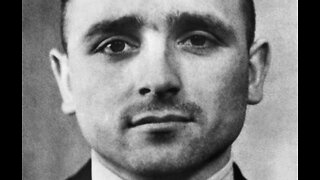 4:26:48
4:26:48
The Memory Hole
6 hours agoThe Life and Times of Klaus Barbie
155 -
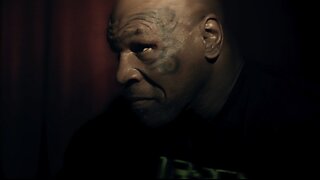 1:12
1:12
Mike Tyson
8 hours ago $4.07 earnedIt's a war.
108K36 -
 1:04:11
1:04:11
In The Litter Box w/ Jewels & Catturd
1 day agoProsecute/Fauci | In the Litter Box w/ Jewels & Catturd – Ep. 692 – 11/15/2024
124K55 -
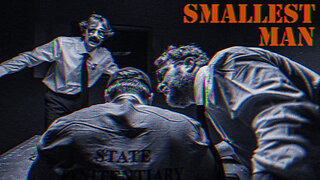 5:17
5:17
BFFs: Dave Portnoy, Josh Richards & Bri Chickenfry
9 days agoSmallest Man
267K24 -
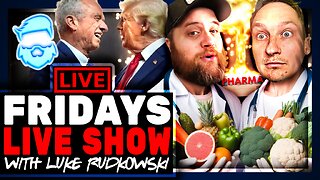 1:45:03
1:45:03
The Quartering
10 hours agoRFK Big Pharma Meltdown, Alex Jones WIN & Shadow Government To Oppose Trump!
148K47 -
 1:53:23
1:53:23
Tucker Carlson
10 hours agoFasting, Prayer, Meditation, & the Global Persecution of Christians (With Hallow CEO Alex Jones)
198K86 -
 53:03
53:03
Ben Shapiro
10 hours agoEp. 2086 - It’s MAHA TIME: Trump Picks RFK Jr.
149K85 -
 57:03
57:03
Russell Brand
13 hours ago“I Can PROVE Biden Took CORRUPT Money From Ukraine” – Rudy Giuliani on The Biden Crime Family –SF494
222K280 -
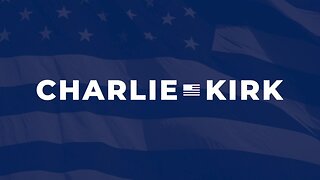 1:59:47
1:59:47
The Charlie Kirk Show
11 hours agoRFK's MAHA Agenda + The Trump Border Effect + Will The Senate Confirm? | Kane, Halperin | 11.15.24
200K58 -
 34:45
34:45
Athlete & Artist Show
6 days ago $6.03 earnedNCAA Officially Votes To Allow MAJOR JUNIOR Players!
87.8K3